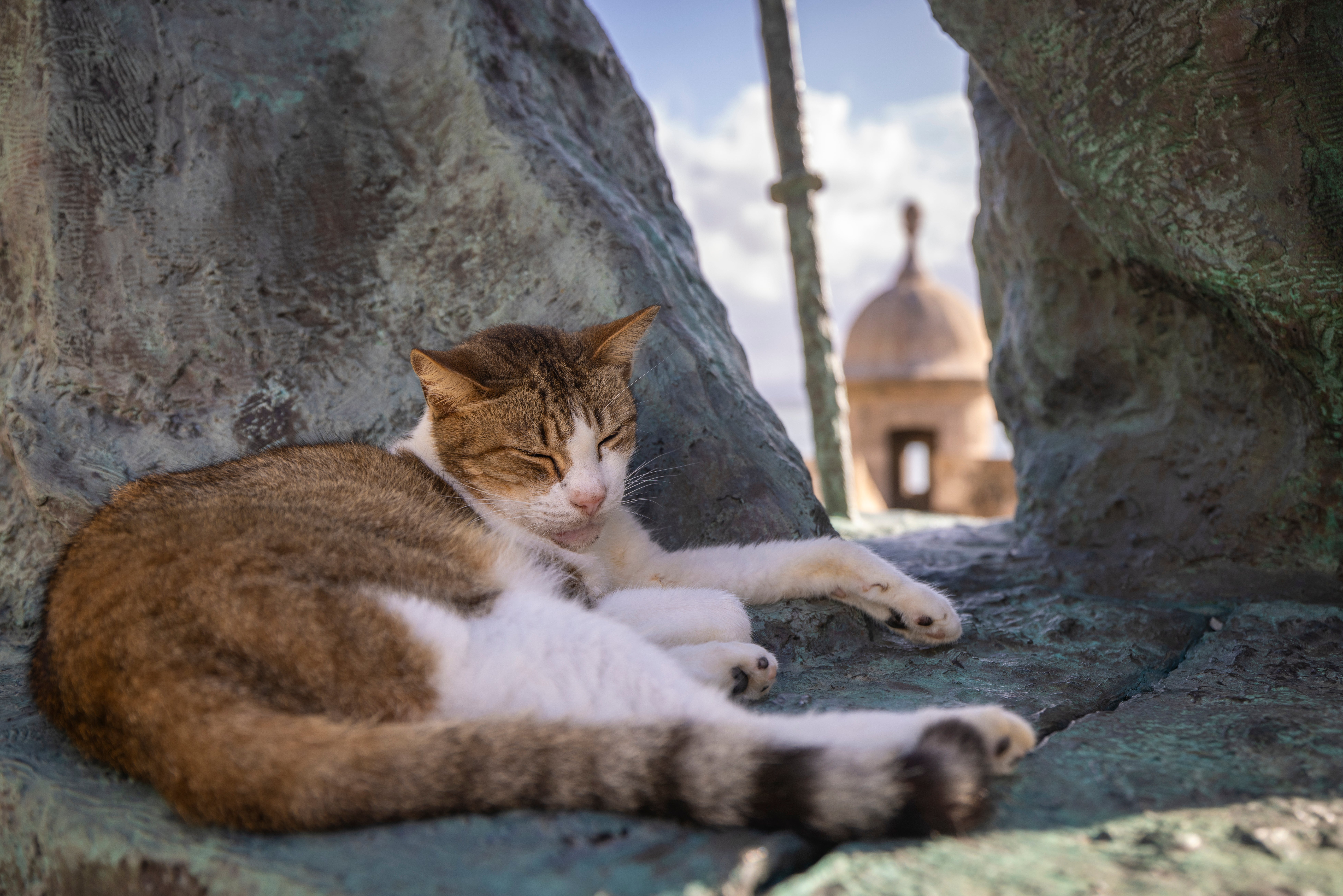US halts plan to remove iconic stray cats from a historic area in Puerto Rico's capital
The U.S. government has temporarily halted a plan to remove iconic stray cats that live in a historic district in Puerto Rico’s capital until a lawsuit opposing the project is resolved

Your support helps us to tell the story
From reproductive rights to climate change to Big Tech, The Independent is on the ground when the story is developing. Whether it's investigating the financials of Elon Musk's pro-Trump PAC or producing our latest documentary, 'The A Word', which shines a light on the American women fighting for reproductive rights, we know how important it is to parse out the facts from the messaging.
At such a critical moment in US history, we need reporters on the ground. Your donation allows us to keep sending journalists to speak to both sides of the story.
The Independent is trusted by Americans across the entire political spectrum. And unlike many other quality news outlets, we choose not to lock Americans out of our reporting and analysis with paywalls. We believe quality journalism should be available to everyone, paid for by those who can afford it.
Your support makes all the difference.The U.S. government has temporarily halted a plan to remove iconic stray cats that live in a historic district in Puerto Rico’s capital until a lawsuit opposing the project is resolved, a nonprofit announced Monday.
The ruling was cheered by those fighting a decision by the U.S. National Park Service to remove an estimated 200 cats that meander a seaside fortress that Spain built in colonial times.
“It’s a victory for the short term, but long term, these cats are still at risk,” said Yonaton Arnoff, an attorney for Maryland-based Alley Cat Allies.
The cats, which have long been a tourist attraction, are both beloved and reviled by those who visit and live in Old San Juan, where the 16th-century fortress known as “El Morro” is located. It's part of the San Juan National Historic Site that the U.S. National Park Service operates.
The federal agency warned in 2022 that the population of cats had surged and that the felines could transmit illnesses to humans, adding that the smell of urine and feces enveloped the area.
In late 2023, the agency announced it would contract an animal welfare organization to remove the cats, and if the organization selected failed to do so within six months, officials would hire a removal agency.
The U.S. National Park Service didn't immediately respond to a message for comment.
The agency held public hearings on the plan that became heated, with critics noting that the organization selected would decide whether the trapped cats would be adopted, fostered, kept in a shelter or face other options.
Arnoff said in a phone interview that removing the current cats is an impossible task since new cats would take their place.
“They’re going to have to keep doing this forever,” he said.
The U.S. National Park Service was scheduled to start removing the cats in October, but it agreed to halt those plans until a judge rules on a lawsuit that Alley Cat Allies filed in March. The nonprofit alleges that the plan violates acts including the National Environmental Protection Act.
A ruling isn't expected until the first quarter of 2025, Aronoff said.
Meanwhile, cats of all colors and sizes continue to prowl the trails bordering deep turquoise waters that surround El Morro, and they even have a statue honoring them nearby. Some of the felines are believed to be descendants of cats from the colonial era, while others were brought by a former mayor to kill rats in the mid-20th century.
A local nonprofit, Save a Gato, feeds, spays and neuters the cats and places them into adoption.
But finding homes for so many cats is hard, with the nonprofit previously noting that sanctuaries in the U.S. mainland don't have room for them.